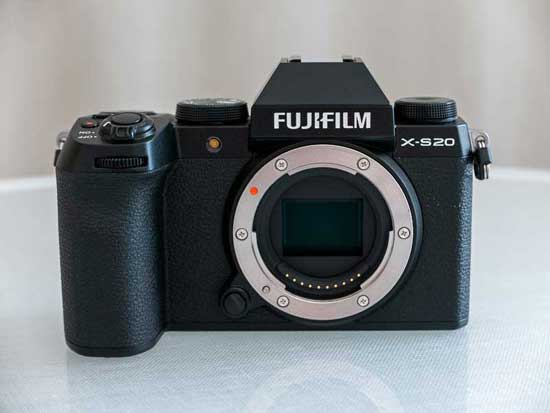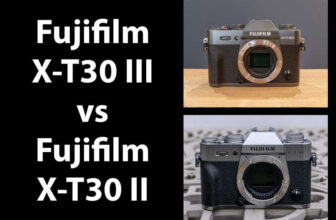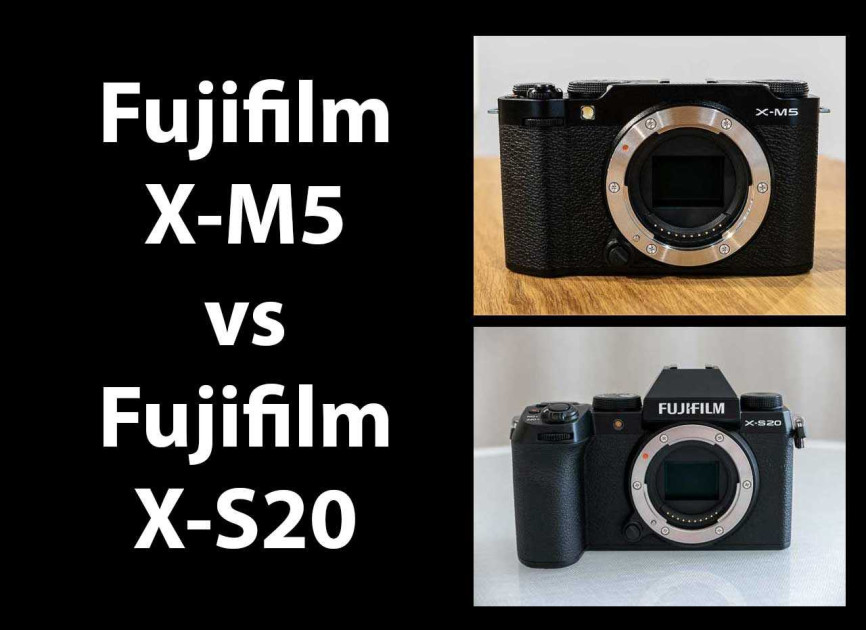
Although they look quite different and occupy different price-points, the Fujifilm XM5 and XS20 actually share a lot of similarities when it comes to their key specifications and features, so much so that savvy buyers may be wondering if the newer model offers everything that they need coupled with the chance to save quite a lot of money.
So we’re bringing you this in-depth Fujifilm X-M5 vs Fujifilm X-S20 head-to-head comparison to help you choose between these two mirrorless cameras..
You can also read our detailed Fujifilm X-S20 review and Fujifilm X-S20 review to find out exactly what we think of both cameras.
Sensor
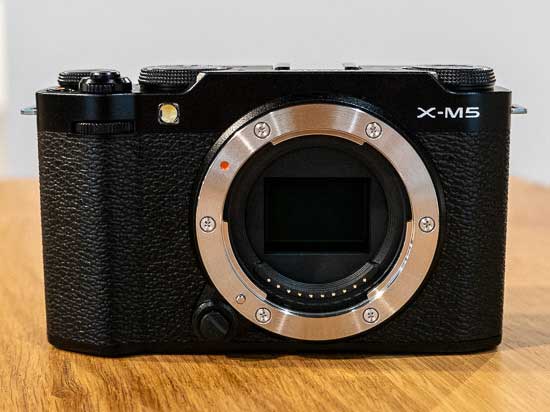
The image sensor used in the new X-M5 and also the more expensive X-S20 is the 26.1 megapixel, APS-C sized, X-Trans 4 BSI CMOS sensor.
Both models therefore provide exactly the same image quality.
Processor
Both cameras benefit from using the latest X-Processor 5 processor, as also used in the flagship X-H2 and X-H2S models.
This primarily means that the XM5 is able to offer the same sophisticated auto-focusing and additional 6K video codecs which the XS20 also supports.
ISO Speed
The native sensitivity range of both cameras is ISO 160 to ISO 12,800, which can be expanded to ISO 80 to ISO 51,200.
Video
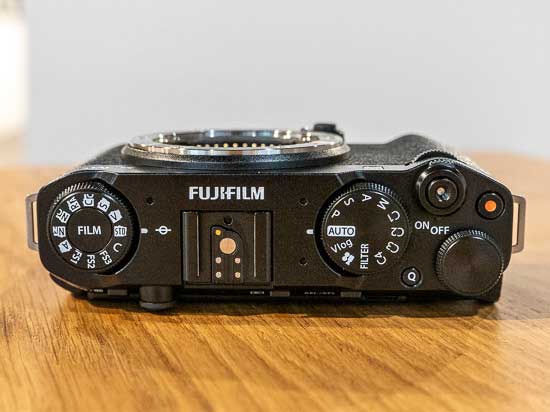
Both cameras offer a highest quality rate of 6.2K/30p with a modest 1.23x crop recorded in 4:2:2 10-bit internally.
Both of them also support up to DCI 4K/60p recording with a 1.17x crop factor.
They can both can shoot 1080/240p slow-motion footage and they offer the latest F-Log 2 profile with up to 14+ stops of dynamic range.
The X-M5 supports bit-rates up to 200Mbps, whereas the X-S20 goes up to 360Mbps thanks to its UHS-II SD card support. It offers up to 60min recording time at room temperature as standard, versus 70 mins on the XS20.
Combined with a compatible HDMI recording device from Atomos or Blackmagic Design, 12-bit RAW video output from the X-M5 and X-S20 can be recorded as Apple ProRes RAW or Blackmagic RAW.
There is a special Vlog shooting mode on both cameras for Vlog production. Set the Shooting Mode dial to “Vlog” to quickly change key camera settings with a touch of a button for video self-portraits. It also enables the Product Priority auto-focus mode and Background Defocus option.
Both models support the Long GOP and All Intra compression formats, F-Log profile, digital image stabiliser, IS Mode Boost, different Main menu and Quick menu systems for stills and video modes, and 3.5mm MIC and headphone sockets.
The X-M5 does offer a number of new video features that the X-S20 doesn’t currently have.
The brand new 9:16 short movie mode creates a 1080p vertical movie when holding the camera horizontally.
There are 3 internal directional microphones offering surround, front and back priority, plus improved wind filter and steady-state noise reduction modes.
Connection via USB cable to a smartphone is available for the first time via the new Fujifilm XApp for high-speed transfer.
The more powerful digital stabilization mode for video (1.32x crop) can now auto-correct rolling shutter in-camera and there’s a new portrait enhancer mode for both video and stills.
The new 4K Long-play mode applies a bigger crop to help reduce heat and further extend recording times.
Autofocus
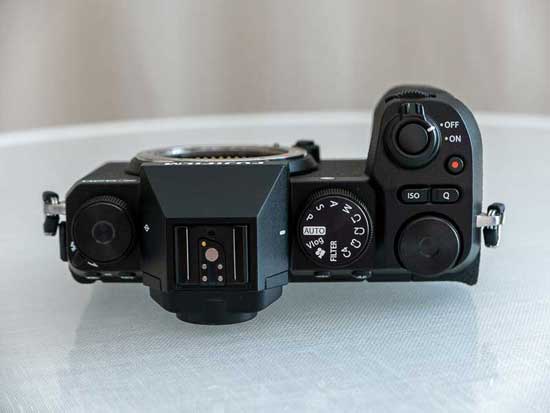
The new X-M5 has exactly the same hybrid autofocus system with phase detection and and contrast detections points as the more expensive X-S20.
In the Single point AF mode there are up to 425 selectable AF points arranged in a 25×17 grid. Alternatively, the camera can be set to 117 points in a 13×9 grid, and the size of the points can also be varied.
In addition to Single point AF, there’s Zone AF which allows the AF points to be selected in 3×3, 5×5 or 7×7 groups, and Wide/Tracking AF.
Both cameras can automatically detect animals, birds, cars, motorcycles, bicycles, airplanes, trains, insects and drones thanks to the X-Processor 5’s AI deep learning capabilities, a feature that no Fujifilm camera other than the XH2S and X-H2 have had before.
Burst Shooting
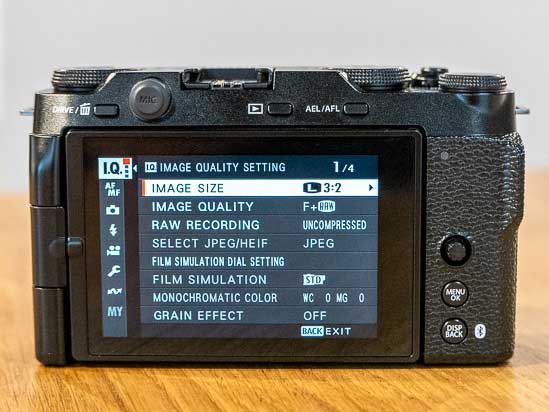
Both cameras offer 8fps continuous shooting speed when using the mechanical shutter.
If you switch to the electronic shutter, they can shoot at up to 20fps with no crop or 30fps with a 1.25x crop applied.
The XS20 has a much larger buffer than the X-M5 for every burst shooting mode, though, especially when shooting JPEGs.
Body and Design
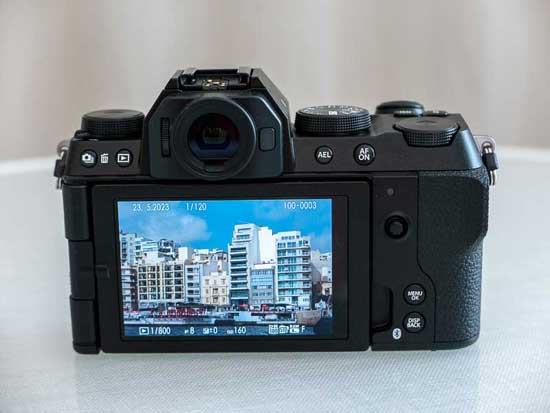
The size and weight of the body is one of the main difference between the XM5 and the XS20.
The new X-M5 is much smaller and lighter than its bigger brother, measuring 111.9 x 66.6 x 38.0mm and weighing in at 355g versus 491g for the XT30II.
This is mainly because the XM5 doesn’t have a built-in electronic viewfinder, pop-up flash or an IBIS unit, all of which can be found on the XS20, and it also has a much smaller hand-grip.
Both offer a simpler interface than higher-end Fujifilm models in order to try and make them more appealing to less experienced users.
If you’ve ever considered a Fujifilm camera but been put of by its plethora of manual controls – something that a lot of people love with a passion – then these two models will be more up your street.
IBIS
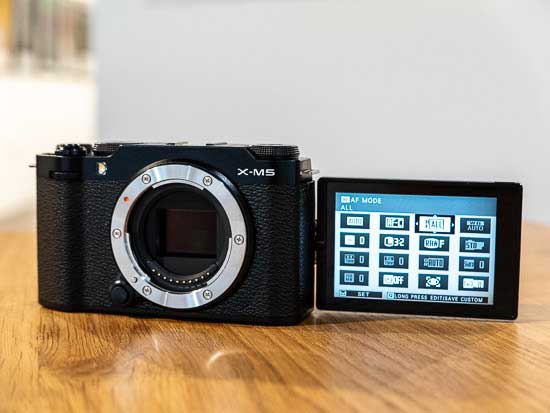
This is one of the key differences between these two cameras.
The X-M5 does not have in-body image stabilisation (IBIS), instead relying on the attached lens (if that is stabilised).
The X-S20 features 5-axis in-body image stabilisation, supporting up to a maximum of 7 stops of compensation, making it the joint-best of any current Fujifilm camera with the X-H2 and X-H2S.
Viewfinder
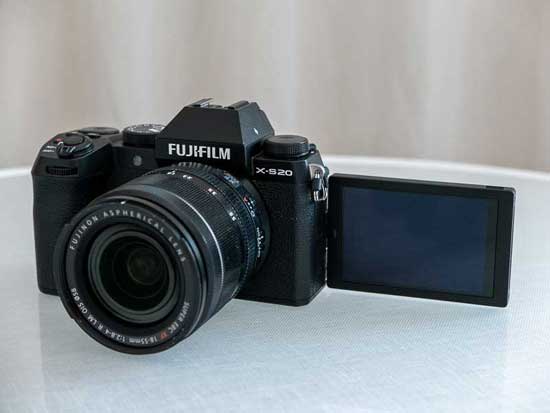
This is the second key difference between these two cameras.
The XM5 doesn’t have a built-in electronic viewfinder, whereas the X-S20 has a 2.36M-dot OLED electronic viewfinder with 0.62x magnification, 100fps refresh rate and a built-in eye sensor.
LCD Screen
Both of these cameras have a 3-inch vari-angle LCD screen that can be tilted out to the side and rotated forwards, and also folded against the back of the camera to help protect it when not in use.
There is one small but important difference – for the first time on an X-series camera, all the connection ports on the X-M5 are located on the opposite side of the flip-screen, with the microphone jack positioned on top, so that nothing gets in the way of the screen when it’s folded out.
Memory Cards
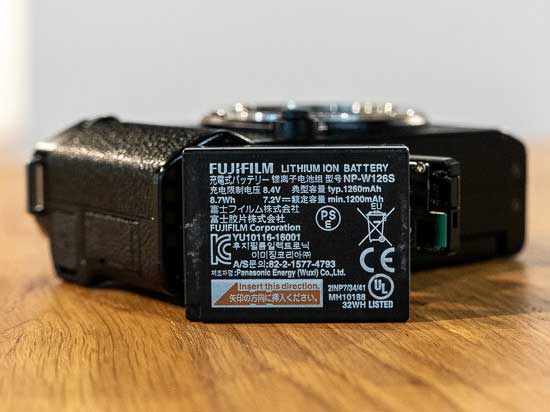
Both models only have a single memory card slot, rather than dual card slots. The XS20 supports UHS-II speed cards, whereas the XM5 only supports slower UHS-I speed cards.
On the XM5 the memory card slot is next to the battery in a shared compartment on the bottom of the camera, whereas on the X-S20 the memory card is housed behind a lockable door on the side of the camera.
So the location of the memory card on the XM5 is much less convenient, especially when the camera is mounted on a tripod, and the memory card slot is slower.
Battery Life
The X-S20 uses a higher capacity NP-W235 battery, offering up to 800 shots on a single charge.
The X-M5 uses a smaller, lower-capacity NP-W126S battery which only offers up to 330 frames or 440 in Economy mode.
Both cameras can also be powered and charged via the USB-C connection, which is useful if you’re out and about and have a compatible power-bank to plug the camera into.
Webcam
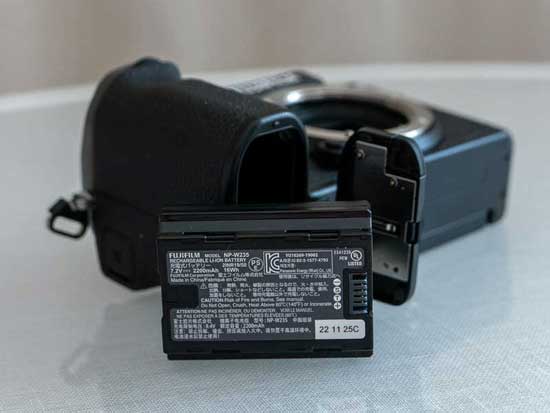
You can use a USB-Type C cable to connect either camera to a computer to use it as a webcam without having to use any software, unlike older models which have to use the Fujifilm X Webcam app.
Price
The Fujifilm X-M5 is priced at £799 / €899 / $799 body-only or £899 / €999 / $899 with the XC 15-45mm lens in the UK.
The Fujifilm X-S20 costs £1249 / $1299 body only, £1399 / $1399 with the XC 15-45mm lens, or £1599 / $1599 with the XF 18-55mm lens, so it’s substantially more than the X-M5.
Conclusion
The new Fujifilm X-M5 is much smaller and lighter than the X-S20 whilst offering the same image quality and AF performance with some extra video functionality, but it doesn’t have a built-in EVF, flash, IBIS or such a large handgrip and it has a smaller buffer, less battery life and a slower memory card slot.
So what do you think? Would you choose the cheaper X-M5 or the more expensive X-S20? Leave a comment below!
Your Comments
Credit : Source Post

